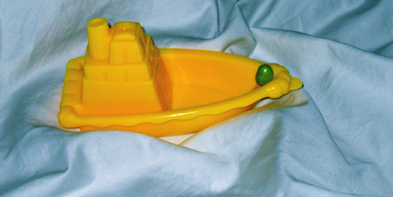entertains, educates & inspires marriages
Find Marriage Answers
the sexpert
The Orgasm DebateIt’s been studied for more than a hundred years and yet science hasn’t been able to decipher what kind of orgasm is better: vaginal or clitoral?

Steve Cooper, hitched
When it comes to orgasms, does it matter if you're fiddling the bean in the boat or hitting the G-Spot?
“ Through his interviews, Kinsey found women could not and were not having vaginal orgasms as Freud preached.”
|
What's The Difference?
First of all, what is the difference between a vaginal and clitoral orgasm? The clitoral orgasm is achieved by direct stimulation of the clitoris. Orgasms are triggered by fingers, tongue, sex toys, or by masturbation and are more intense because the stimulation is localized. Clitoral orgasms are typically described as "higher" and "intense" and can be accompanied by a sense of over stimulation.
A vaginal orgasm is achieved via stimulation of the vagina canal, which includes the G-Spot, the lower interior vaginal walls and the cervix. Vaginal orgasms are usually described as "deep" and "relaxing", and can be followed by a profound sense of calm. Orgasms during intercourse are often less acute.
Vaginal Orgasm's Rise In Popularity
It was Sigmund Freud who first suggested that there were two types of orgasms. He theorized the orgasm experienced through clitoral stimulation was the precursor of a deeper, more satisfying orgasm experienced in the vagina during penetration by the penis.
According to Freud, the vaginal orgasm was a feminine and mature sexual response, while the clitoral orgasm was masculine, immature and inferior. In essence, a married woman, who loved her husband, was supposed to naturally "transfer" the pleasurable feelings she had from her clitoris to her vagina during penile penetration.
Unfortunately, it was of no consequence that Freud did not have any scientific proof; this whole idea was concocted by his powers of supposing.
Freud and his disciples took the vaginal orgasm idea and wrote many papers on the topic thereby making it "scientifically" sound. As such, the hard-to-win-over scientific and medical communities embraced the superior vaginal orgasm.
For more than half a century, women tried unsuccessfully to be good lovers by transferring their inferior clitoral orgasm to the mature vagina. Not surprisingly, many women ended up in therapy with Freud and his disciples to help them deal with this "sexual dysfunction."
The Fight Against Freud
In the 1940s, sex researcher Dr. Alfred Kinsey took thousands of men and women’s sex histories. Through his interviews, Kinsey found women could not and were not having vaginal orgasms as Freud preached. Kinsey lashed out on Freud’s ideas. Unfortunately, his book was written for academics and did not appeal to the average reader.
Then in the 1960s, sex researchers Masters and Johnson decided to test Kinsey’s theory in the laboratory. Masters and Johnson observed women’s sexual response to different stimulation and found that the majority of their subjects could only achieve clitoral orgasm, while a small minority achieved vaginal orgasm.
Masters and Johnson’s findings coincided with the feminist movement. Feminists were infuriated that Freud, one man, could have messed up women’s minds, orgasms and sex lives for so many generations. Feminists went on a campaign to gain back the respect for clitoral orgasm.
The fight was not an easy one. For example, Dr. Mary Jane Sherfey, Freudian trained psychiatrist published The Nature and Evolution of Female Sexuality in 1966. Bravely her book questioned then disproved Freud’s orgasm theory. The hostility from the scientific community was immense.
Thank goodness today most women do feel comfortable having a clitoral orgasm. However, there is still a lot of confusion and misunderstanding surrounding whether women are missing out on the bigger vaginal orgasm experience.
Today's Debate
Where do some of these misunderstandings come from? Part of it is triggered by pop-culture’s latest craze of promoting the G-Spot orgasm as superior to a clitoral orgasm. As well, romance novels and movies often depict woman being completely orgasmic with no foreplay and only penile penetration.
I have spoken to many women who wonder what is wrong with them that they cannot have a G-Spot orgasm or cannot get turned-on by simple penile thrusting. I always reassure them the majority of women are only able to orgasm via stimulation of the clitoris.
Which Is Better: Vaginal Or Clitoral?
The question remains, is there a best kind of orgasm? The answer would have to be absolutely not. An orgasm is an orgasm is an orgasm, regardless of how it manifests itself. The bottom line is, it does not matter how a woman climaxes so long as she enjoys herself in the process.
Dr. Trina Read has a doctorate in human sexuality. Dr. Read is also an international speaker and offers a free sex audio tip weekly on her website www.trinaread.com/t-sextips.
Leave a Comment
|
threshold | life | money | sex | blog | married life social network | partners | directory | wine club | podcasts | newsletters | subscribe | advertise | contact us | press releases | archives | privacy policy
Copyright © 2023 Hitched Media, Inc. All rights reserved. | hitched - entertains, educates & inspires marriages |


